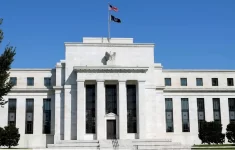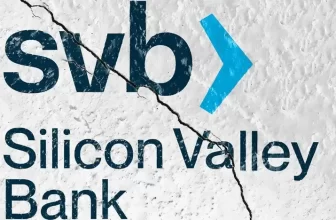
Battling the Odds: Small Banks Grapple with Financial Hurdles Triggered by the Fed
The Fed’s Decisions Weigh Heavy on Small Banks In the complex world of monetary policy, small banks find themselves in the crosshairs, as decisions made by the Federal Reserve take a toll on their financial stability. With the growing pressure of regulatory changes and economic factors, these institutions are fighting an uphill battle to stay afloat.
The Double-Edged Sword of Low Interest Rates and Quantitative Easing The Fed’s unwavering commitment to low interest rates and quantitative easing policies has thrown small banks a curveball. While these strategies aimed to kickstart economic growth, they’ve inadvertently made it harder for small banks to earn a healthy profit.
The Profitability Conundrum Low interest rates are squeezing net interest margins – the gap between the interest income banks earn and the interest they pay out to lenders. This financial pinch is leaving small banks scrambling to maintain profitability and keep the lights on.
Navigating the Regulatory Minefield and the Cost of Compliance Monetary policy isn’t the only obstacle. Small banks are also wrestling with a mounting regulatory burden and the skyrocketing costs of compliance. Post-financial crisis regulations are hitting small banks harder, as they may lack the resources to adapt and meet these new demands.
The High Price of Staying in the Game To keep up with ever-changing regulations, small banks must invest heavily in personnel, technology, and infrastructure. These expenses can weigh heavily on smaller institutions, further compromising their profitability and ability to compete against larger banks.
The Domino Effect of Small Banks’ Struggles The challenges faced by small banks have a ripple effect on local economies, businesses, and communities.
The Lending Drought and its Economic Fallout Financially strained small banks may be less able to lend to local businesses and consumers. This can trigger a chain reaction, leading to reduced economic growth and fewer opportunities within the communities they serve.
The Critical Role of Community Banking Small banks are the lifeblood of local economies, often providing essential financial services to underserved populations. If these institutions falter, communities could lose their vital community-focused banking, affecting the financial health of individuals and businesses.
Charting a Course for Small Banks’ Survival To help small banks weather the storm, a multipronged strategy is needed.
Customized Regulatory Frameworks Crafting tailored regulatory frameworks that consider the unique needs and characteristics of small banks can help lighten their burden. This could mean implementing proportionate regulations and offering guidance to help them navigate the compliance maze.
Pooling Resources and Expertise: An Industry-Wide Effort The banking industry as a whole can lend a hand to small banks. This may involve larger banks joining forces with smaller ones to share resources, technology, and expertise, or industry associations pushing for policies that benefit small banks.
Government Intervention and Policy Reforms Finally, government intervention and policy changes are key to tackling the systemic issues that plague small banks. This could involve reevaluating monetary policy decisions and promoting initiatives that foster the growth and sustainability of small banks.
In Conclusion The challenges that small banks face in light of the Federal Reserve’s decisions have far-reaching implications for the financial sector and the communities they serve. Through tailored regulation, industry collaboration, and government intervention, we can support the crucial role these institutions play in nurturing economic growth and financial well-being.






